Marc Chagall
(Russian, 1887- 1985)
Chagall did not believe in terminology which placed him in any particular school or movement. He refused to be labled a Surrealist, but nonetheless drew inspiration from dreams. His themes incorporate recollections of his early years in Russia, his native village, flying lovers, mythical creatures of folklore and legend, and his beloved adopted city of Paris. Due to his extraordinary accomplishments in the medium, Chagall is recognized as the foremost color lithographer of the 20th century.
Biography
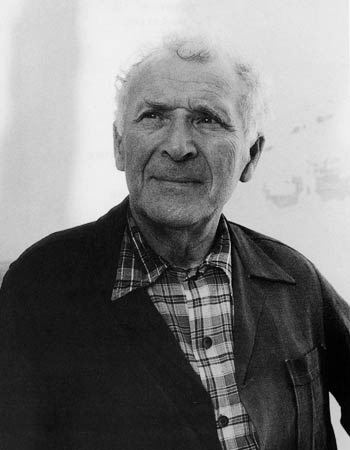 Marc Chagall was born in Vitebsk, Russia in 1887 and lived to be 97 years old. His style, while reflective of cubist, expressionist, and surrealist affinities is distinctly personal. His contribution to early modern painting and printmaking has been of the first order.
Marc Chagall was born in Vitebsk, Russia in 1887 and lived to be 97 years old. His style, while reflective of cubist, expressionist, and surrealist affinities is distinctly personal. His contribution to early modern painting and printmaking has been of the first order.
Chagall studied briefly with a local artist in Vitebsk, and in 1908 studied at the Academy in St. Petersburg. In 1910 he went to Paris, where he would live for most of the rest of his long life. There he met poets Max Jacob, Blaise Cendrars, and Andre Salmeon, and the painter Modigliani, Delaunay, La Fresnaye, and other Cubists and Independents.
The complexities of Chagall’s aesthetic are apt to be obscured somewhat by the whimsical fantastic subject matter. It does not detract from Chagall’s uniqueness of expression; however, to attribute to Cubism an early and formative influence upon this gifted Russian. The impact of cubist structure and spatial handling is evident in his I and My Village, 1911, and over Vitebsk, 1916, both in the New York Museum of Modern Art. Thereafter, his style becomes increasingly unique and the cubist aspects operate less evidently.
Apollinaire introduced Chagall to Herwarth Walden, the German publisher and dealer in Berlin, 1914. This resulted in Chagall’s first one-man show in the same year. He returned to Russia to marry, and after the Revolution of 1917 he was appointed Commissar of Fine Arts for Vitebsk, and founded an art school there. He designed murals for the Moscow Jewish Theater in 1922, and then left for Paris by way of Berlin, where he stayed long enough to make engravings as illustrations for a book.
The poet Cendrars was responsible for Chagall’s meeting with the art dealer, Ambroise Vollard, and his first retrospective exhibition was given at the Barbazange-Hodebert, Paris in 1924. His style became increasingly romantic and devoted to fantastic narratives during the middle 1920’s. Chagall’s first lithography plates (30 in all, 1992-23) in Berlin, were executed in crayon on lithographic paper. The Jewish Wedding (1926, New York Museum of Modern Art), a gouache and chalk composition, disclosed another tendency of his Russian origin. His first New York show dated from 1926. In 1927, he undertook the illustration of La Fontaine’s Fables completing 100 plates in 1930. In 1931, he traveled to Palestine and Syria to study themes for Biblical engravings, another Vollard commission.
Chagall had a retrospective show in 1947 in Paris, Amsterdam and London, and was represented at the 1948 Venice Biennale. In 1949, he worked in Venice, especially with ceramics. In that year he also painted an important canvas, “The Red Sun” an allegory invoking memories of his late wife with strikingly colored imagery referring to the Russian folk fantasy, which is so much an aspect of his art.
The 1950’s brought additional honors to Chagall, not the least of which was the commission from the Joseph Neufeld and the Women’s Zionist Organization of America, to design twelve stained-glass windows for the synagogue of the Hadassah-Hebrew University Medical Center near Jerusalem.
During the 1960s, Chagall continued to travel widely, often in association with large- scale commissions he received. Among these were the ceiling for the Paris Opéra, installed in 1964; a window for the United Nations building, New York, installed in 1964; murals for the Metropolitan Opera House, New York, installed in 1967; and windows for the cathedral in Metz, France, installed in 1968. An exhibition of the artist’s work from 1967 to 1977 was held at the Musée du Louvre, Paris, in 1977–78, and a major retrospective was held at the Philadelphia Museum of Art in 1985. Chagall died March 28, 1985, in Saint-Paul-de-Vence, France.
-

La Maison de Mon Village
-
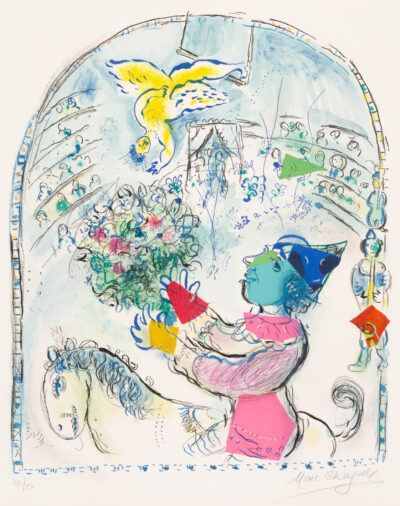
Le cirque à l’ange
-

Autoportrait
-
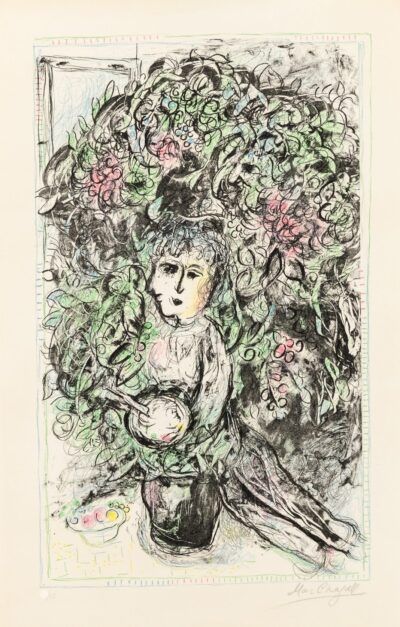
LE JOUR DE MAI
-

Enlèvement de Chloé
-
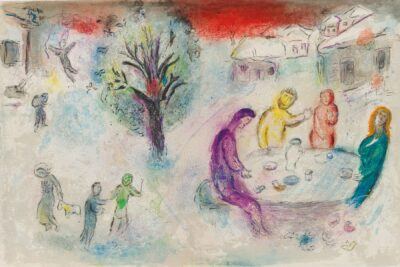
Le Repas chez Dryas
-

Hyménée
-
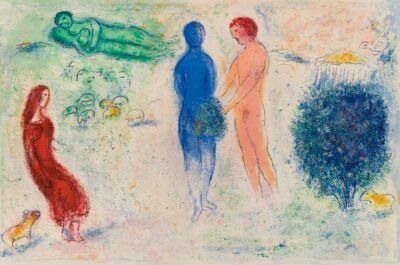
Le Jugement de Chloé
-

Songe de Lamon et de Dryas
-
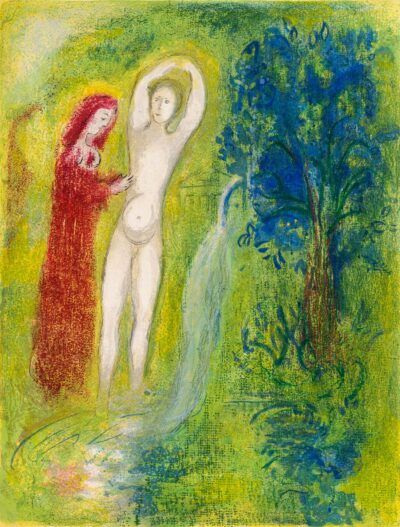
Daphnis et Chloé au Bord de la Fontaine
-

Le Songe de Daphnis et les Nymphes
-
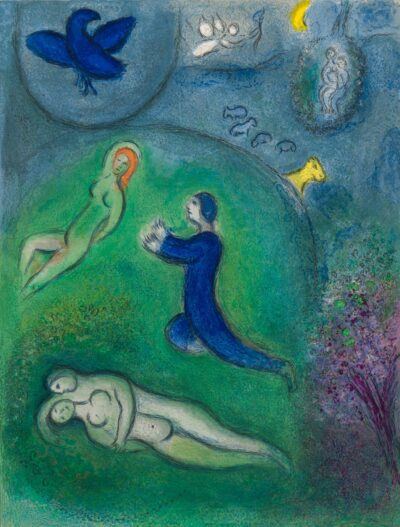
Daphnis et Lycénion